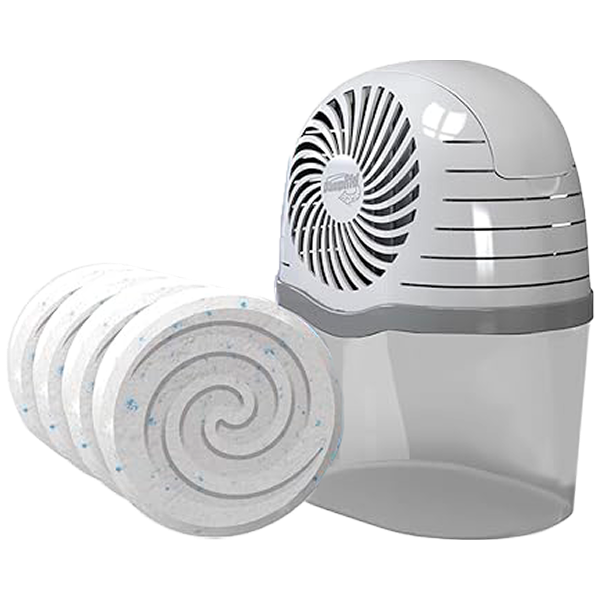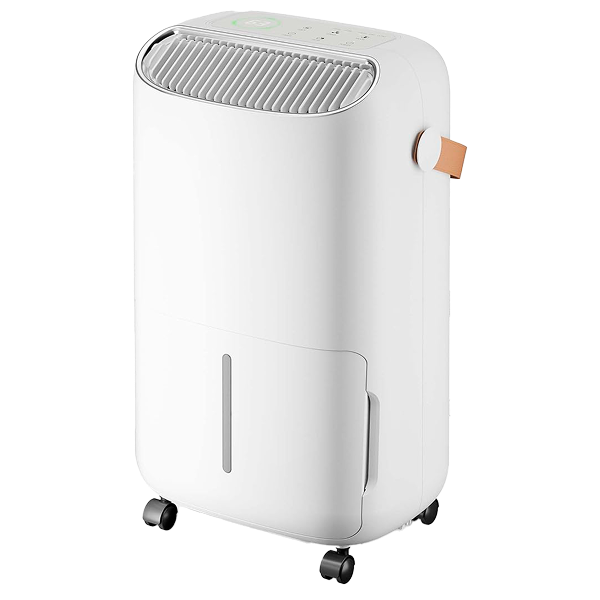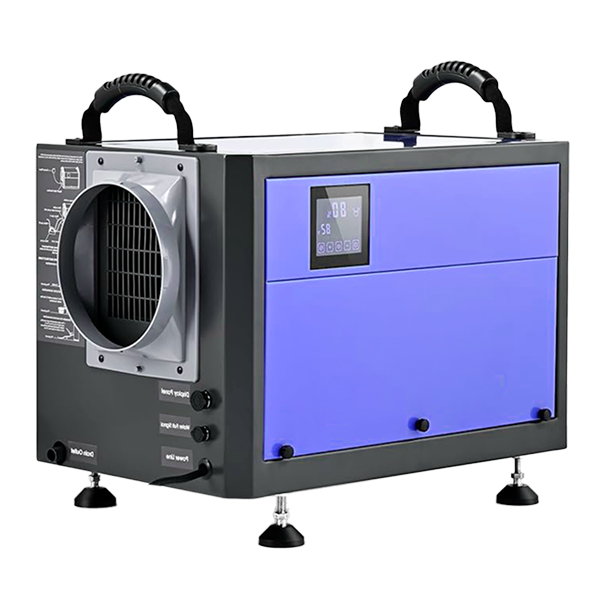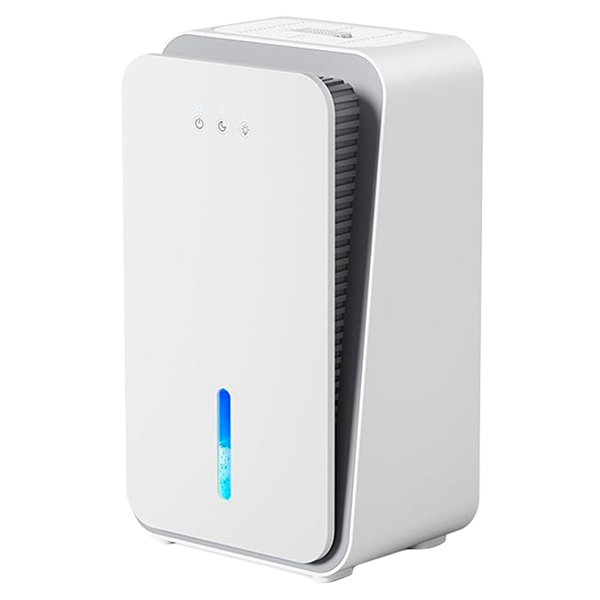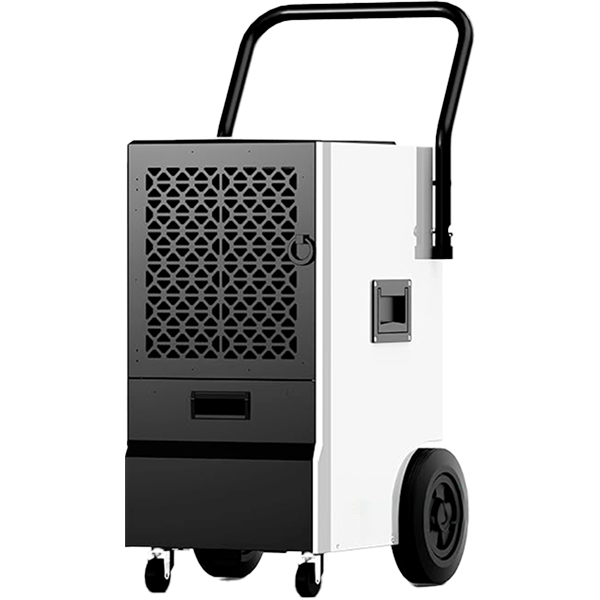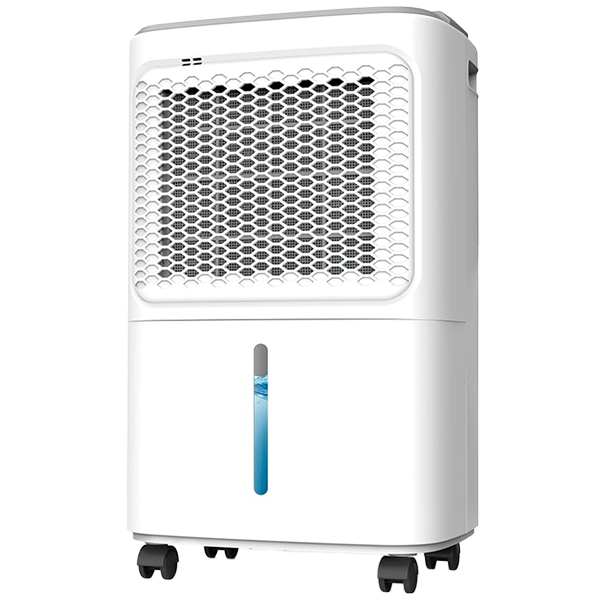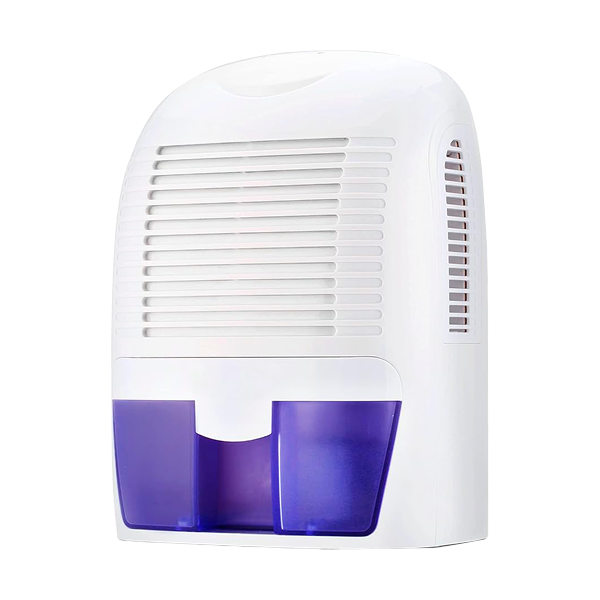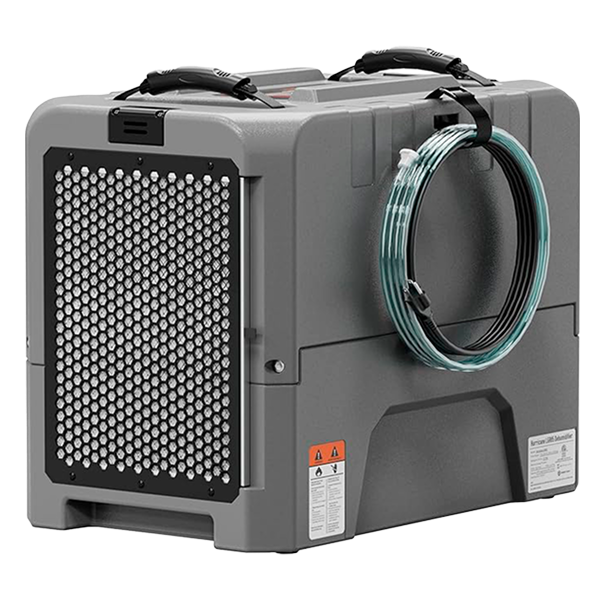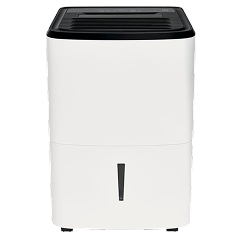Whether you want to run a dehumidifier overnight or need help removing moisture from a children’s bedroom or office, many people look for quiet dehumidifiers to aid in moisture control. A silent dehumidifier, measured by low decibel ratings, ensures that activities like sleeping, working, studying or watching TV aren’t disturbed by the appliance’s operation, and means that you can be in the same room when it’s on.
In this guide, we’ll break down dehumidifiers based on common decibel levels, review popular manufacturers, and help you choose a unit best suited for your space and needs..
For a broader overview of dehumidifier types, common household scenarios, and leading brands, see our general guide.
Noise Level & Preferences (dB)
Dehumidifiers aren’t completely silent, but some models are designed to run much more quietly than others. The right choice depends on where you’ll be using it and how sensitive you are to background noise:
- Under 30 dB – Near Silent: Comparable to a whisper or library setting. Perfect for bedrooms, nurseries, or study areas where silence is important.
- 30–40 dB – Whisper Quiet: Soft background noise, similar to a quiet conversation. Suitable for living rooms, kitchens, or overnight use.
- 40–45 dB – Quiet: Noticeable but unobtrusive, like gentle rainfall. Best for daytime use in shared spaces or sleepers who don’t mind a soft hum.
If you plan to run a dehumidifier while sleeping, look for a model with a dedicated night or sleep mode, ideally rated at under 40dB.
Moisture Extraction (L/24 h)
This rating indicates the amount of water a dehumidifier can extract from the air over 24 hours. Compact machines usually manage around 10-12 litres per day, while more powerful units can extract upwards of 20 litres. The right capacity depends on both the size of your space and the severity of the damp problem.
- Under 10L/day – Common in smaller models. Suited to studies, children’s rooms, storage areas, or spaces with only mild damp or light condensation.
- 10–20L/day – The most popular range for household compressor units. A good choice for bedrooms, living rooms, and flats where humidity is clearly noticeable.
- 20L+/day – Heavy-duty units built for larger rooms or tougher conditions. Useful for drying clothes indoors, tackling leaks, or dealing with persistent damp in open-plan areas, offices, or multi-storey homes.
If you’re battling stubborn condensation, mould, or musty odours, it’s worth choosing a higher-capacity model to see quicker results.
Tank Capacity
Moisture removed from the air is gathered in an internal water tank. Bigger tanks reduce emptying frequency, though they make the unit bulkier.
- Under 2L – Typically needs emptying once a day with regular use. Best for nurseries, small bedrooms, or short-term use.
- 2–4L – A practical middle ground, offering enough capacity for most households without making the dehumidifier too large.
- Over 4L – Ideal for running continuously in damp environments. A convenient choice for larger or busier homes where frequent emptying would be a hassle.
Some models offer continuous drainage for non-stop operation without manual emptying.
Coverage Area (m²)
Make sure the dehumidifier you choose has enough capacity for your room size. Think about the layout as well — open-plan spaces, high ceilings and oddly shaped corners and alcoves can make dehumidification less efficient.
- Under 20 m² – Ideal for small bedrooms, bathrooms, or home offices.
- 20–40 m² – Works well in standard bedrooms, kitchens, or mid-sized living rooms.
- 40 m²+ – Best for large lounges, basements, or open-plan spaces.
Humidistat Control
This function allows you to set your preferred humidity level. The dehumidifier will switch off once that level is reached and only turn back on if humidity rises again. This saves energy and avoids drying the air too much.
- Manual Dial – Simple, cost-effective, and straightforward to use.
- Digital Display – Provides greater accuracy, often shows real-time humidity, and allows easy one-touch settings.
Energy Efficiency Ratio (EER)
EER measures how efficiently a dehumidifier uses electricity to remove moisture. A higher rating means less wasted energy and lower running costs, making it an important factor to check before buying, especially if you’re eco-conscious and/or on a budget.
- Below 1.5 – Low energy efficiency, expect higher energy bills.
- 1.5–2 – Moderate efficiency, fine for most households.
- Above 2 – High efficiency, offering better long-term savings.
Modes & Functions
Modern dehumidifiers come with various use-specific modes to better adapt to and enhance your lifestyle. These often include:
Continuous Drainage Option
A continuous drainage hose is useful if you want to run your dehumidifier nonstop without having to manually empty it. Using a drainage hose allows you to leave the unit unattended, with water flowing into a drain or large collection tank.
Portability Features
If you’ll be moving your dehumidifier between rooms, look for features like wheels, carry handles, and a lightweight body. Ergonomic designs make it easier to transport and store, while small touches – such as a built-in cable tidy – can add extra convenience.
Smart/App Connectivity & App Features
Many modern models now come with Wi-Fi compatibility, allowing you to remotely turn the dehumidifier on/off and control its settings via a smartphone app. Some models also support voice control, letting you use Alexa or other smart assistants to set the dehumidifier hands-free.
Most common app functions include:
Aesthetics (Design, Colour & Size)
Dehumidifiers now come in a range of attractive designs to suit different interiors. Most are available in neutral colours and often with modern details such as LED lighting or curved edges. Quiet dehumidifiers vary in size as well, and range from compact shelf units to large designs.
Operating Temperature Range
Most compressor dehumidifiers operate at a temperature between 5–35 °C. However, certain types, such as desiccant dehumidifiers, support colder climates too. Always double-check the unit’s operating temperature based on the intended room use to ensure efficiency.
- Standard Range (15–35°C) – This is the standard operating temperature for dehumidifiers. Ideal for most home environments.
- Cold-Ready Models (<10°C) – These may feature auto-defrost or use desiccant technology. Perfect for basements, garages, or unheated conservatories.
For cooler rooms with constant temperature below 15°C, choose models with an auto-defrost function or opt for larger, desiccant models (cold garages and basements).
Filter Type
Most compressor dehumidifiers come with built-in filters to help eliminate dust, allergens, and impurities from the air released into the room. Filter type affects both maintenance and air quality:
- Washable Mesh Filter – Standard in most models. Easy to clean, reusable, and keeps dust out of the coils.
- HEPA Filter – Captures up to 99.97% microparticles as small as 0.3 microns. Ideal for asthma sufferers or allergy concerns.
- Activated Charcoal / Carbon Filter – Neutralises odours and traps gases, making it great for kitchens, basements, or damp-smelling rooms.
- Plastic / Basic Filter – Found in budget units. Protects the dehumidifier but offers minimal air-quality benefits.
If clean air is as important to you as humidity control, opt for a model with a HEPA or carbon filter.
Dehumidifier Types
Dehumidifiers work in different ways depending on the technology they use. The three main types are:
- Refrigerant (Compressor) – Cools the air by passing it over internal coils so moisture condenses into water. Best for warmer, humid rooms.
- Desiccant – Uses an absorbent material and heat to remove moisture. Works well in colder spaces like garages or unheated rooms.
- Peltier (Thermoelectric) – Compact and quiet, with no compressor. Energy-efficient, but most effective only in small areas.
Traffic Light Humidity Sensors
Certain dehumidifiers include a traffic light system that gives a quick visual guide to your room’s humidity levels. The coloured lights make it easy to see if conditions are comfortable or if action is needed:
- Green – Ideal humidity (around 40–60%).
- Amber – Slightly high, may feel damp or stuffy.
- Red – High humidity, with increased risk of mould, condensation, or musty odours.
Certifications
Check for independent certifications to make sure a dehumidifier meets safety, performance, and environmental standards, and look for awards from reputable publications and journals.
- Quiet Mark – Recognises products engineered for low-noise operation, making it easier to find the quietest models.
- CE / UKCA Marking – Shows the unit complies with UK and EU safety regulations.
- Energy Star – Highlights models that meet strict energy efficiency criteria, helping reduce running costs.
- RoHS Compliance – Confirms the product avoids hazardous materials in its components.
Leading Manufacturers Overview
Meaco
Best for: Energy efficiency | Bedroom use | Quiet performance
Meaco is one of the UK’s most trusted dehumidifier brands, known for its MeacoDry Arete One series. Designed in Britain, these units focus on quiet operation, low running costs, and convenience for everyday household use.
- Ultra-quiet operation with Sleep Mode and low dB ratings
- Energy-saving controls with Smart Humidity logic
- Integrated HEPA filter options for cleaner air
Cons: Pricier than budget models; availability can vary due to high demand
Russell Hobbs
Best for: Budget-friendly options | Everyday household use
Russell Hobbs offers a range of affordable compressors and mini dehumidifiers that suit smaller spaces or light damp issues. They’re a popular entry-level choice for homes needing straightforward humidity control.
- Compact models ideal for bedrooms, kitchens, or small flats
- Easy-to-use manual controls and simple designs
Cons: Less powerful than specialist brands; limited advanced features
Silentnight
Best for: Small bedrooms | Nurseries | Occasional use
Silentnight produces compact and lightweight dehumidifiers that are easy to move around the home. They’re designed with quiet running in mind, making them well-suited for night-time use in bedrooms or children’s rooms.
- Whisper-quiet operation, often below 40 dB
- Compact size fits neatly on shelves or bedside tables
- Affordable, with simple one-button controls
Cons: Smaller tank sizes; limited extraction rates compared with larger units


